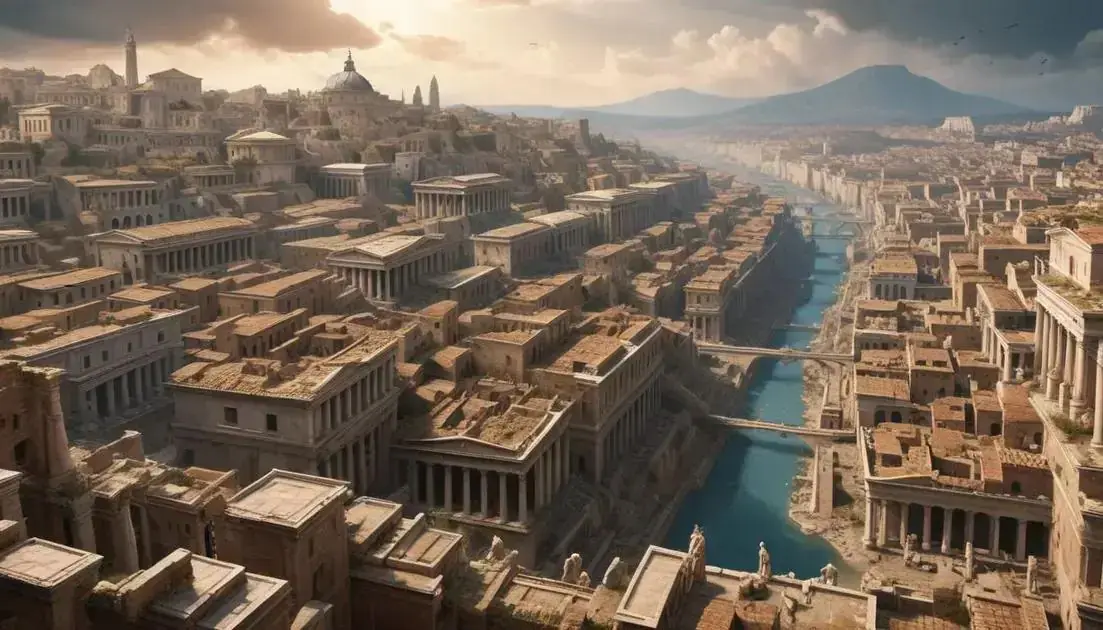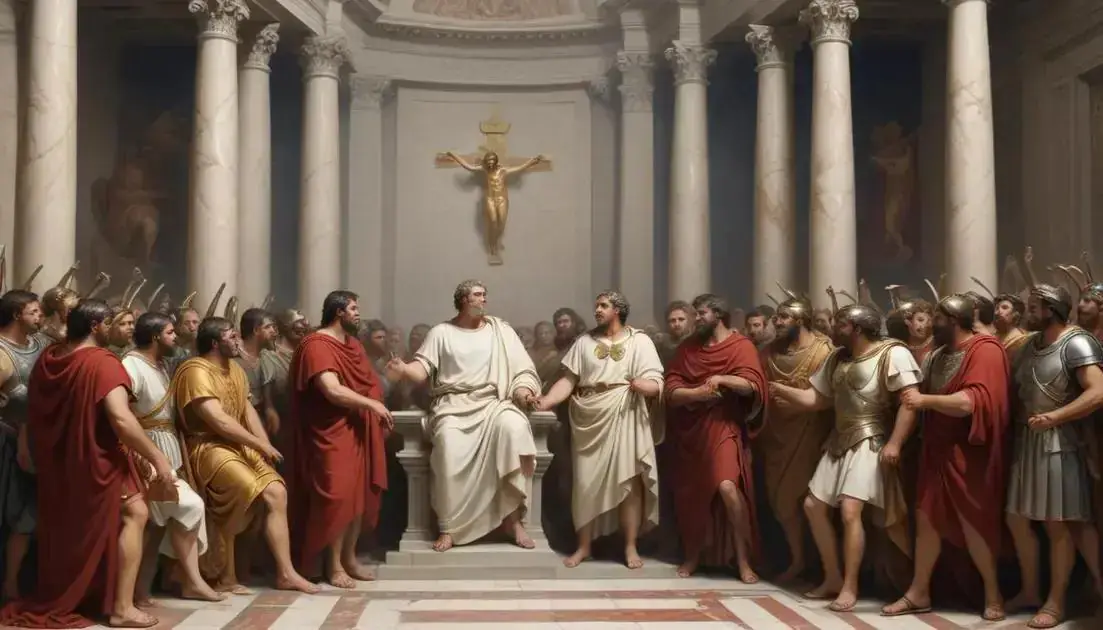
Edict of Serdica: Official End of Christian Persecutions
The Edict of Serdica, issued by Emperor Galerius in 311 AD, marked a significant moment for Christianity by officially ending brutal persecutions. This edict allowed Christians to openly practice their faith, laying the groundwork for future religious freedom and acceptance. It not only encouraged the growth of Christian communities but also set a precedent for tolerance within the Roman Empire, ultimately influencing modern views on religious liberty.
The Christian Persecutions faced a monumental change in 311 when the Edict of Serdica was issued, allowing believers to practice their faith openly.
Introduction to the Edict of Serdica
The Edict of Serdica was a major turning point in the history of Christianity. In 311, it marked the official end to the harsh Christian persecutions that had been rampant in the Roman Empire. This document, issued by Emperor Galerius, allowed Christians to openly practice their faith without fear of punishment.
Understanding the Edict
Before the Edict, many Christians faced severe consequences for their beliefs. They could be arrested, tortured, or even killed. Galerius recognized that these actions were not helping the Empire. Instead, they were causing unrest and division. The Edict aimed to bring peace.
What the Edict Said
The Edict permitted Christians to gather and worship freely, which was a big change. While it didn’t erase all conflicts, it provided a legal framework for rights. Galerius hoped this would unite the people and end the violence.
Impact on Early Christians
For early Christians, this was a moment of relief and joy. Churches started to emerge, communities grew, and the faith spread rapidly. The Edict didn’t just change laws; it changed lives.
Today, the Edict of Serdica serves as a reminder of how far we’ve come in terms of religious freedom and the importance of tolerance in society.
Historical Context of Christian Persecutions
The historical context of Christian persecutions is crucial for understanding the Edict of Serdica. During the early years of Christianity, believers faced severe challenges. The Roman Empire was largely polytheistic, worshiping many gods. This created tension with Christians, who only believed in one God.
Reasons for Persecution
Persecutions began because Christians refused to worship the Roman gods. This was seen as a threat to the state. Emperor Nero famously blamed Christians for the Great Fire of Rome in 64 AD. This led to brutal crackdowns.
Methods of Persecution
Many Christians were arrested, tortured, or killed in public spectacles. Some were fed to lions, while others faced execution. These acts aimed to scare others into abandoning their faith. Yet, they often inspired more people to embrace Christianity.
Changing Attitudes
As time went on, attitudes towards Christians began to shift. Some emperors, like Constantine, started to see Christianity as a unifying force. This culminated in the Edict of Milan in 313 AD, which recognized Christianity and granted it legal status.
This historical backdrop sets the stage for understanding the significance of the Edict of Serdica and how it changed the fate of Christians within the Roman Empire.
Details of the Edict
The Edict of Serdica was an important document that changed the lives of many Christians. It was issued by Emperor Galerius in 311 AD. This edict allowed Christians to practice their faith legally for the first time.
Main Points of the Edict
The Edict made it clear that Christians could gather and worship without fear. They were no longer hunted or punished for their beliefs. This was a huge relief to many who had suffered in silence.
Legal Changes
Under this edict, Christians could own property and build churches. These changes empowered the Christian community to grow and flourish. It also allowed them to participate in the broader society without fear of persecution.
Significance of the Edict
The Edict marked a shift in the Roman Empire. It showed that the Empire was beginning to accept Christianity more openly. This change paved the way for future rulers to support the faith.
While the Edict of Serdica didn’t erase all hate or conflict, it was a vital step toward religious freedom. It brought hope to many early Christians who had faced years of persecution.
Significance and Impact on Christianity
The significance of the Edict of Serdica is immense for Christianity. It transformed the way Christians practiced their faith in the Roman Empire. For the first time, they could worship openly without fear of punishment.
Encouragement and Growth
This edict allowed many to embrace Christianity freely. More people wanted to join the faith, knowing they could do so safely. Churches began to flourish, and communities started to grow.
Shift in Public Perception
With the legal acceptance of Christianity, public attitudes began to shift. People started to view Christians less as outlaws. Instead, they saw them as valuable members of society.
Long-term Effects
The Edict set a precedent for future religious tolerance in the Roman Empire. It laid the groundwork for later emperors to support Christianity openly. This paved the way for Emperor Constantine’s Edict of Milan in 313 AD.
Overall, the impact of the Edict of Serdica still resonates today. It was a crucial moment that helped spread the message of Christianity across Europe and beyond.
Legacy and Modern Reflections
The legacy of the Edict of Serdica is still felt today. It marked a turning point for religious freedom in history. This edict showed that tolerance could exist in a vast empire.
Influence on Modern Christianity
Today, many Christian communities look back at the Edict with gratitude. It set the stage for their right to worship freely. Without it, Christianity might not be as prevalent as it is now.
Lessons in Tolerance and Acceptance
The Edict teaches us about the importance of tolerance. It reminds us that acceptance can lead to peace. Learning to respect different beliefs can unite people rather than divide them.
Ongoing Struggles for Religious Freedom
Even today, many people fight for their right to worship. The challenges faced by early Christians continue in various forms around the world. The success of the Edict encourages those still seeking justice and freedom.
Reflecting on the past helps us understand the value of religious liberty and acceptance in our modern lives.
Conclusion
In conclusion, the Edict of Serdica played a vital role in shaping the landscape of Christianity and religious freedom. By allowing Christians to practice their faith openly, it marked the beginning of a new era of tolerance within the Roman Empire. This significant moment not only encouraged the growth of Christian communities but also set a powerful example for future generations.
Today, we can reflect on the legacy of the Edict and recognize the ongoing need for acceptance and respect for all beliefs. The lessons learned from this historical event remind us that the journey toward religious freedom is still relevant today. As we continue to advocate for tolerance, we ensure that everyone has the right to worship freely and without fear.


